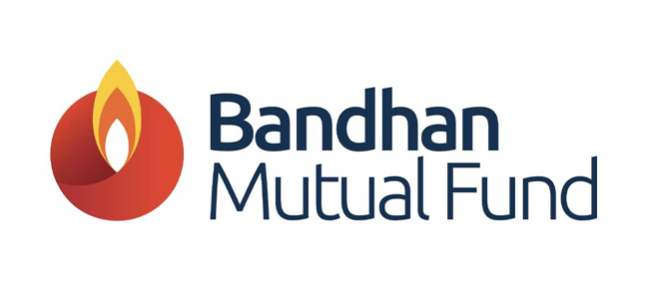
This is a guest post authored by the team at Bandhan Mutual Fund, one of India’s leading fund houses with ₹1,26,000 cr of Assets under Management as of 21 Sep 2023.
Wish I would have planned earlier for my retirement”, Joseph, a retired marketing executive, pondered as he glared at his hospitalization bill in distress. At the age of 65, he was financially dependent on his daughter as the soaring medical inflation and rising cost of living inched steadily to eat up his savings. Joseph had not prioritized planning for retirement – a regret that continues to haunt him today.
The frown on his face turned into a grin as he was visited by his friend Robert, a retired finance professional enjoying life to the fullest by travelling across the globe. The guilt of not investing for retirement engulfed Joseph’s mind; he confided to his friend that he missed out on this opportunity due to other goals, such as his daughter’s further education and the need to buy his own house. While Joseph cried over spilt milk, he realized that time lost cannot be recovered…
Retirement planning is determining your retirement goals, estimating the corpus required to maintain the desired lifestyle and implementing this strategy to secure yourself financially.
The study by India Life Expectancy Macro Trends stated that the life expectancy of Indians has increased significantly from 53 to 70 years, indicating a major demographic transition in the past five decades. A higher life expectancy suggests that your corpus should last longer to live a financially secure life, making it pertinent to retirement planning.
The hard-hitting fact that the prices of goods have been on an upward spiral is another powerful reason to plan for retirement. Be it food, clothing, footwear, housing or transportation, prices have been on the rise consistently. What we buy today for Rs. 1,000 could cost a lot more after a few years. Am I well-equipped to keep pace with the rising cost of living even after I stop earning?
Well, this indeed warrants critical evaluation.
When the ravaging COVID-19 pandemic hit the Indian shores, businesses slumped, livelihoods went into a tailspin and hospitalization expenses escalated. Adverse situations such as medical contingencies could deplete your savings and derail your journey to achieving post-retirement goals. A well-crafted strategy aligned with your needs is a pathway to achieving goals, meeting expenses and providing for contingencies post-retirement.
One size does not fit all – Every retirement plan is unique based on several factors, like the current lifestyle, estimated retirement age, retirement goals, risk appetite, and investment horizon.
Your current age, expected retirement age, and horizon build the primary groundwork for your retirement strategy. For example, a 40-year-old investor wants to retire at the age of 65. In this case, the investment horizon is 25 years. Furthermore, you must assess your ongoing expenses, current lifestyle, and payable loans to gauge how much you need to save for your retirement bucket list.
With the evolving dynamics of life, retirement goals may also witness a radical change. Let’s walk through the different stages of life to understand how to prepare for retirement:
a) Youthful Adulthood – Planning Period: This stage could be typically characterized by several priorities, such as financing professional aspirations, buying a house, and building an emergency corpus for contingencies.
During this phase, investors are willing to take greater risks and allocate a large pie of their portfolio to growth-oriented assets such as equities to earn relatively higher returns over the long term.
b) Middle age group – Transition Period: You may have to finance your child’s further education, support ageing parents or repay loans earlier. Moreover, with rampant lifestyle diseases, you would seek medical insurance plans to curtail your financial obligations.
As retirement is nearing, middle-aged investors may choose to shift from an aggressive investment strategy to a dynamic asset allocation strategy to balance the portfolio’s risk. Hybrid mutual funds expose the portfolio to a blend of equity and debt, offering the best of both worlds – equity could generate capital appreciation over the long term while the debt component could cushion the impact of the fall during market downturns.
c) Senior age group – Reap the benefits of your investment: In this phase, you would accept cash flows from various sources such as systematic withdrawal plans, annuities, dividends, and capital gains.
Investors would be more conservative by allocating most of their portfolios to relatively stable investment options such
as debt mutual funds and other fixed-term instruments.
Many retirement products are available for investment, ranging from National Pension System (NPS), Public Provident Fund (PPF), Insurance Pension Plans, Annuity Plans, and Mutual Funds. Retirement Fund could be an effective option for investors as it is professionally managed, facilitates diversification and has the potential for creating a sizeable retirement corpus.
1. Professional Management: Mutual funds are managed by professional fund managers with deep expertise in the industry. They devise investment strategies per the fund's objective and follow a framework to manage the risks effectively.
2. Wide range of options: The investment goals, risk-return appetite and investment horizon differ for each investor. Mutual funds offer many options, such as Equity, Debt and Hybrid, that you can select from based on your risk-return appetite.
3. Diversification: You must have heard of the maxim, ‘Do not put all your eggs in one basket’. In the investing parlance, this highlights the relevance of portfolio diversification. Mutual funds invest across stocks, bonds and money market instruments. A diversified portfolio helps investors reduce the overall risk by spreading their investments across various asset classes and sectors.
4. Various modes of investment: There are several modes of investing in mutual funds that you can select from based on your preference:
a) Systematic Investment Plan (SIP): Investors can begin their investment journey through the SIP route with an amount as low as Rs. 500 per month, making this a pocket-friendly tool. Moreover, your investment amount can be increased gradually per your requirements. Investing systematically in a phased manner is convenient and inculcates the habit of saving.
b) Systematic Withdrawal Plan (SWP): The facility lets you withdraw a fixed or increasing amount at predetermined intervals from your mutual fund corpus to meet your regular expenses. The icing on the cake is that you can choose the duration and quantum of consistent cash flows per your preference.
c) Systematic Transfer Plan (STP): With time, you may transfer a portion of your investment from one mutual fund scheme to another. A convenient way to execute this is through the Systematic Transfer Plan facility. For example, investors may park their corpus in a relatively low-risk debt fund and transfer the money regularly to an equity fund. Alternatively, when investors approach their goals, they may choose the STP facility to withdraw gains from equity funds and shift their corpus to a quality debt fund, facilitating relative stability.
5. Transparency: You can receive regular updates on the performance of the scheme, the fund manager’s investment strategy, Net Asset Value (NAV) of the scheme, investment in each asset class, etc.
6. Regulation: Mutual fund investments in India are well-regulated by the Securities and Exchange Board of India (SEBI). The mutual fund providers in the country have to abide by the rules and regulations laid down by SEBI.
7. Liquidity: Retirement funds in India have a lock-in period of five years, which could help keep investors’ emotions at bay and encourage them to remain invested for a reasonably longer period. While retirement funds have a lock-in period, investors can easily purchase and redeem the units of an open-ended mutual fund scheme on all the market days after the lock-in period.
Mutual Funds have the potential to beat inflation and build potential wealth over the long term. The Hare and the Tortoise fable holds good even in the current scenario. This resonates with staying invested and focusing on our long- term goals, comparable to the victorious tortoise who did not give up.
The earlier you kick-start planning for your retirement, the more time you have to benefit from the power of compounding and maximize the likelihood of achieving your financial goals. After all, you don’t want to sail in the same boat as Joseph, who regrets not planning early for his retirement!
The opinions expressed are those of the authors and should not be construed as advice from Kuvera.
DISCLAIMER:
MUTUAL FUND INVESTMENTS ARE SUBJECT TO MARKET RISKS, READ ALL SCHEME RELATED DOCUMENTS CAREFULLY.
The Disclosures of opinions/in house views/strategy incorporated herein is provided solely to enhance the transparency about the investment strategy / theme of the Scheme and should not be treated as endorsement of the views / opinions or as an investment advice. This document should not be construed as a research report or a recommendation to buy or sell any security. This document has been prepared on the basis of information, which is already available in publicly accessible media or developed through analysis of Bandhan Mutual Fund. The information/ views / opinions provided is for informative purpose only and may have ceased to be current by the time it may reach the recipient, which should be taken into account before interpreting this document. The recipient should note and understand that the information provided above may not contain all the material aspects relevant for making an investment decision and the security may or may not continue to form part of the scheme’s portfolio in future. Investors are advised to consult their own investment advisor before making any investment decision in light of their risk appetite, investment goals and horizon. The decision of the Investment Manager may not always be profitable; as such decisions are based on the prevailing market conditions and the understanding of the Investment Manager. Actual market movements may vary from the anticipated trends. This information is subject to change without any prior notice. The Company reserves the right to make modifications and alterations to this statement as may be required from time to time. Neither Bandhan Mutual Fund (formerly known as IDFC Mutual Fund)/ Bandhan Mutual Fund Trustee Limited (formerly IDFC AMC Trustee Company Limited) / Bandhan AMC Limited (formerly IDFC Asset Management Company Limited), its Directors or representatives shall be liable for any damages whether direct or indirect, incidental, punitive special or consequential including lost revenue or lost profits that may arise from or in connection with the use of the information.
Interested in how we think about the markets?
Read more: Zen And The Art Of Investing
Watch/hear on YouTube:
Start investing through a platform that brings goal planning and investing to your fingertips. Visit kuvera.in to discover Direct Plans and start investing today.











